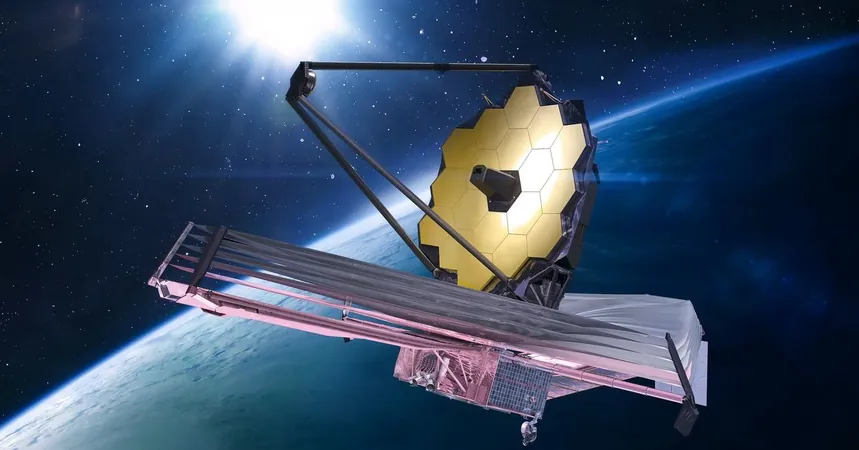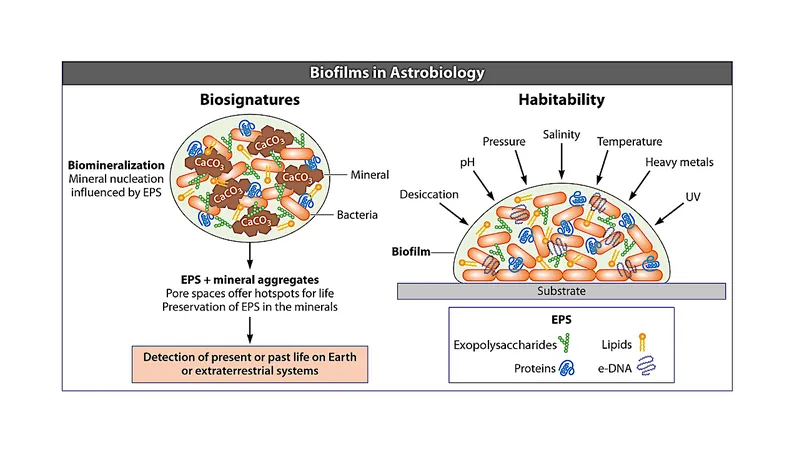
Groundbreaking Discovery: Carbon Dioxide Found on Exoplanets for the First Time!
2025-03-25
Author: Mei
Groundbreaking Discovery
In an unprecedented achievement, scientists have detected carbon dioxide on planets outside our solar system for the very first time. Utilizing the revolutionary James Webb Space Telescope, researchers made this significant observation on four exoplanets within the HR 8799 system, approximately 130 light-years from Earth. This groundbreaking discovery not only sheds light on the atmospheric makeup of these distant worlds but also provides essential insights into their formation processes, suggesting they were formed similarly to Jupiter and Saturn through the gradual accumulation of solid cores.
Key Insights from the Discovery
William Balmer, an astrophysicist at Johns Hopkins University and the lead author of the study published in The Astronomical Journal, expressed excitement about the findings. "By detecting these strong formations of carbon dioxide, we have shown that there is a considerable fraction of heavier elements, such as carbon, oxygen, and iron, present in the atmospheres of these planets," he stated. This suggests a core accretion formation process, which is particularly thrilling for planets within our observational reach.
The HR 8799 System
The HR 8799 planetary system is relatively young at just 30 million years old, especially when compared to our solar system, which has existed for a staggering 4.6 billion years. Due to their recent formation and ongoing thermal emissions, these exoplanets radiate significant amounts of infrared light, providing a wealth of data for scientists comparing their development to that of stars or brown dwarfs—large gaseous objects that don't ignite as stars.
Philosophical Aspects of Research
Balmer also added a philosophical angle: “Our hope with this type of research is to understand our own solar system, life, and ourselves in comparison to other exoplanetary systems, allowing us to contextualize our existence.” The quest to visualize and analyze how other solar systems are similar to or different from ours inspires researchers to explore the nature of our planetary neighborhood.
Significance of Carbon Dioxide
The presence of carbon dioxide is vital since it has played a crucial role in the emergence of life on Earth, marking it as a key objective in the hunt for extraterrestrial life. Further, CO2 can condense into tiny ice particles in the frigid expanse of space, offering clues about planetary formation and composition. Jupiter and Saturn likely formed from icy particles that accumulated, leading to the gigantic gas planets we observe today.
Future Research Directions
Laurent Pueyo, co-author of the study and an astronomer at the Space Telescope Science Institute, emphasized the importance of continued research, stating, "We have other lines of evidence that point to the formation of these four planets in HR 8799 using this bottom-up approach. The question remains how common this formation is among long-period planets that we can directly image, and we propose further observations using Webb, guided by our carbon dioxide diagnostics."
JWST's Capabilities
Unlocking the true potential of the James Webb Space Telescope, this mission demonstrates the capability to not only infer the atmospheric composition of exoplanets from starlight measurements but also directly analyze chemical compositions at such vast distances. This was accomplished through the use of JWST's advanced coronagraphs, which block out starlight and expose the hidden worlds beyond.
Implications of the Findings
Moreover, the implications of these giant planets cannot be overstated. Balmer highlighted their potential influence on other celestial bodies: "If these massive planets act like bowling balls traversing our solar system, they can disrupt, protect or, in a sense, do both to planets similar to ours." Therefore, comprehending their formation is crucial to understanding the broader context of the formation, survival, and habitability of Earth-like planets in the future.
Conclusion
As we stand on the brink of a new era in exoplanetary research, the excitement surrounding these discoveries is palpable. Who knows what other secrets the universe holds as we continue to explore the cosmos?

 Brasil (PT)
Brasil (PT)
 Canada (EN)
Canada (EN)
 Chile (ES)
Chile (ES)
 Česko (CS)
Česko (CS)
 대한민국 (KO)
대한민국 (KO)
 España (ES)
España (ES)
 France (FR)
France (FR)
 Hong Kong (EN)
Hong Kong (EN)
 Italia (IT)
Italia (IT)
 日本 (JA)
日本 (JA)
 Magyarország (HU)
Magyarország (HU)
 Norge (NO)
Norge (NO)
 Polska (PL)
Polska (PL)
 Schweiz (DE)
Schweiz (DE)
 Singapore (EN)
Singapore (EN)
 Sverige (SV)
Sverige (SV)
 Suomi (FI)
Suomi (FI)
 Türkiye (TR)
Türkiye (TR)
 الإمارات العربية المتحدة (AR)
الإمارات العربية المتحدة (AR)